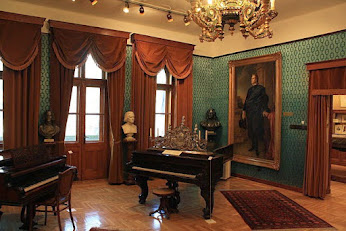It didn't take Liszt long to recover from his love affair with Countess d'Agoult in 1844. Soon he fell in love again, this time with Princess Carolyne von Sayn Wittgenstein, whom he had met on a tour of Russia in 1847. Two years later he was settled with her in Weimar, where, after resuming his position as chapel master, he would later carry out a fruitful work as organizer of the city's musical life.
Carolyne, aware of what could happen with the maestro and his fans during the tours, hastened to advise him to abandon his concert career so that he could focus his energies on symphonic composition. Liszt, the idol of multitudes of the first half of the XIX century, admirably solicitous, gave up piano recitals at the age of 36.
Concert works
Carolyne guessed correctly. Now we see that most of Liszt's concertante works are framed, precisely, in the period of his first stable stay in Weimar, from 1849 to 1861.
Before Weimar, the Hungarian master had made a name for himself in European musical circles as a virtuoso concert pianist, and so he devoted all his efforts to composing for solo piano, because that was the instrument he mastered and, after all, his status as a performer ensured the immediate diffusion of his creations.
Piano and orchestra
So when he wanted to compose for piano and orchestra, he found himself somewhat untrained. And this is where Weimar comes in because during his stay there he regularly conducted a large instrumental ensemble, for which he needed to know in depth the orchestral pages of the great masters, thus managing to climb steps in the experimentation of his own ideas. Even so, in his first orchestral works, he requested the intervention of his pupil Joachim Raff as an instrumentalist. This is the case of the Piano Concerto No. 1, although some say that Liszt required technical assistance not because he had doubts, but because it was comfortable for him.
Concerto for Piano and Orchestra No. 1 in E-flat major
Its first sketches date from 1830 when Liszt was 19 years old, but the master began to work resolutely on it only after 1840. He finished it in 1849 and after several revisions it was premiered only in 1855, in Weimar, with Liszt at the piano and Hector Berlioz conducting.
The rendition is by the Chinese-born pianist Lang Lang, accompanied by the BBC Symphony Orchestra conducted by Edward Gardner, during the 2011 Proms at London's Royal Albert Hall.
The work consists of four sections, which are played with no interruption:
